Do you want to learn How to Grow Cilantro?
Have you ever been interested in growing your own Cilantro from seed?
Do you not want to spend the time, energy, or effort in reading a book or watching a long tutorial video?
[toc]
Lucky for you, you don’t have to!
After growing cilantro from seed for years and spending countless hours researching PAINLESS tips, I have created How to Grow Cilantro from Seed: 10 PAINLESS Tips!
Tip #1: Choose These 3 Cilantro Types
There are many types of cilantro that can be grown throughout different parts of the world.
If you want to grow cilantro in the most painless way possible then there are 5 types of cilantro you should grow.
These 5 types of cilantro are the easiest to grow, maintain, harvest, and have the greatest variety of uses.
1. Slow-Bolting Cilantro
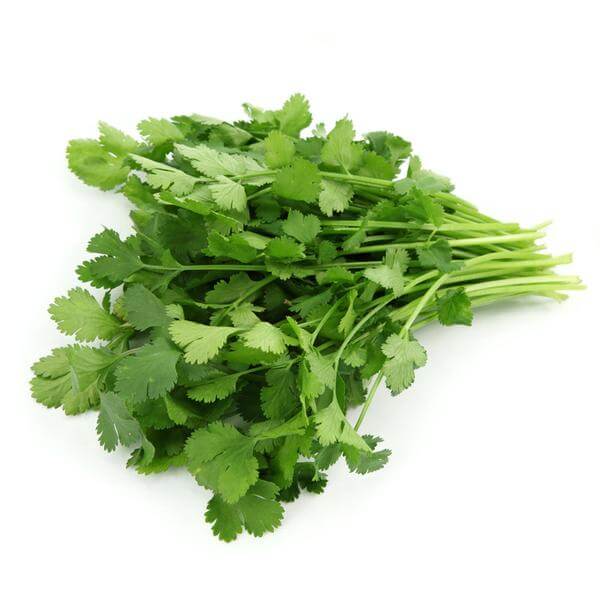
Cilantro is a quick-bolting plant that can bolt or flower as quick as 3 weeks.
Because of this, you will want to buy slow-bolting cilantro seeds to help you get cilantro all year-long. Slow-bolting cilantro can take up to 5 weeks to bolt.
In addition, slow-bolting cilantro has a larger yield with bigger and more flavorful leaves.
The leaves come in a flat, medium-dark green color. The stalks are also green.
And this herb can grow 18 inches to 2 feet tall.
Types of slow-bolting cilantro include leisure, long-standing, and long-lasting. All of these will look, smell, and taste the same.
Slow-Bolting Cilantro is great in salsas, pesto, guacamole, and even stir fry.
2. Santo Cilantro
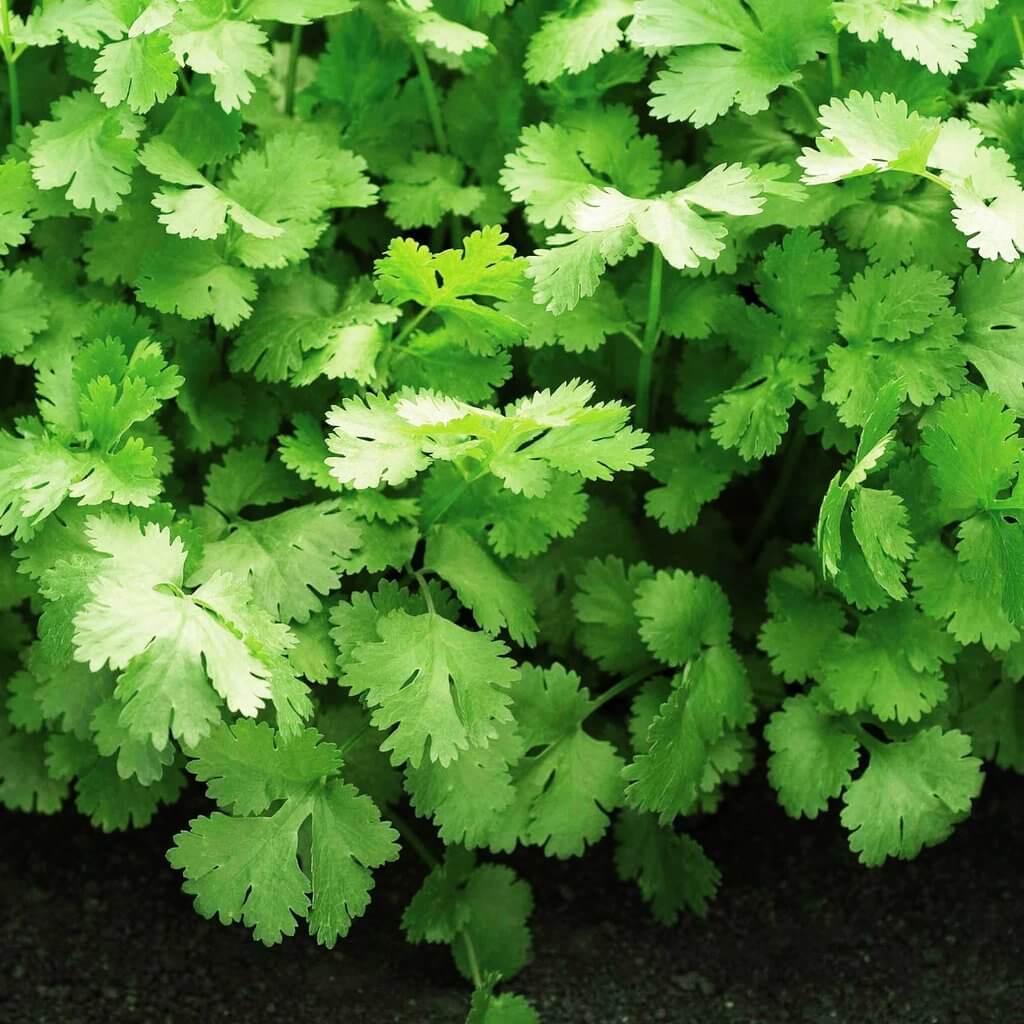
Santa Cilantro is the most popular choice among gardeners. It is also the most popular choice among commercial growers.
This is another slow-bolting cilantro that can take up to 8 weeks to bolt.
This is also a type of cilantro that when pruned and harvest will promote more growth.
The leaves of the plant are light to a moderate shade of green and have a flat-tooth and spiny texture to it.
The plant grows to about 2 feet tall but can be harvested before this.
The lime and nutty flavor make this type of cilantro perfect in Mexican and Asian dishes.
An added bonus is that this is a great plant to attract butterflies and other beneficial insects.
If you are interested in learning more about attracting beneficial insects to your garden then I recommend reading Plants that Attract Bees to Your Garden
3. Vietnamese Cilantro
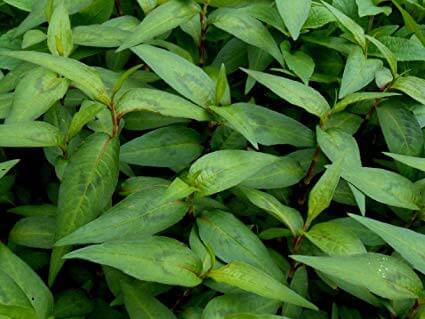
Vietnamese cilantro is a warm-weather herb that does not tolerate cooler temperatures as well as other types of cilantro.
This type of cilantro is best-suited indoors or in pots during the summer season.
The leaves are a dark green color with maroon streaks and have stems that are green or light red.
This plant grows to as tall as 1 feet during peak season.
Vietnamese cilantro has a spicier flavor than most and is great in duck and fish dinners. It can also be used for anti-inflammatory purposes.
4. Calypso
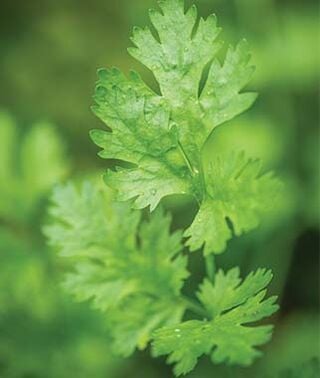
Calypso cilantro is one of the slowest growing plants that can take up to 2 months to bolt.
Not only this, but it is a quick harvesting herb that can take as little as 4 weeks to be ready.
The leaves are large and have a light green color with a dark green stem.
It can grow up to 18 inches tall.
It is another type of cilantro that when pruned and harvest promotes more growth.
You can use this cilantro in guacamole, salsas, and as a garnish.
5. Confetti Cilantro
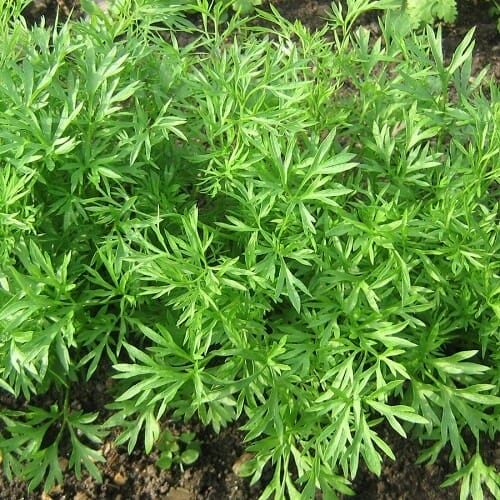
Confetti cilantro is a great option for anyone who wants milder and less overpowering cilantro. This type of cilantro also has a sweeter taste than most other types of cilantro.
It grows with thick stalks and finely shaped leaves that are of light to medium color.
It can grow 18 inches to 2 feet.
And it is perfect in salads, fresh salsas, garnishes, and as a garnish.
Tips #2-5 Purchase Great Garden Supplies
Cilantro can be one of the tougher herbs to grow from seed.
To make sure you have the highest chance of success you will want to make sure you buy the correct garden supplies.
2. Purchase Traditional Seeds
Any time you grow herbs from seed the type of seed is the most essential supply.
Regardless of the type of cilantro you grow, you will want to use a traditional seed.
You may note that certain companies will advertise organic cilantro seeds. This is more of a marketing scheme and you truly won’t see any difference in the plant of benefits to your health.
Instead, focus on buying your cilantro seed from a reputable company at an inexpensive price. I recommend purchasing from Amazon.
3. Buy a Small & Large Garden Container
Once you decide the type of cilantro seed you want to buy you will then want to purchase two types of pots.
You will want a small, 3-inch pot to start off your seed.
And then you will want a larger, 5-gallon container.
You will want the 5-gallon container to use before transplanting your seed into your garden. You can also use this to grow your cilantro year-round.
Because of frost, animals, and potential disease I always recommend starting your seed indoors.
4. Buy 3 Garden Tools
Growing herb seeds can be fun and interesting.
It can also be time-consuming and cost you more money than buying it at the store.
If you want to make growing cilantro seeds painless and cost-effective then I recommend buying the below garden tools:
- Tolco Spray Bottle – A good spray bottle is critical to watering your seed since you cannot use a hose or watering bottle.
- Vremi 9 piece toolset – A good toolset will not only help you with growing, caring, and harvesting your cilantro, but can help with all your plants!
- Hydrofarm Grow Light – If you don’t have an area of your house that receives 8 hours of sunlight a grow light is essential to help germinate your seed.
- Heating Mat – If you don’t have an area of your house that stays at least 70 degrees Fahrenheit then you will need a heat mat to keep your cilantro seed at the correct temperature.
5. Buy Potting Soil & Fertilizer
Having the right potting soil and fertilizer can make the difference of having cilantro all summer versus just a couple of weeks
You will want to plant your cilantro in a soil that drains well, has a mix of nutrients, and is not compact.
I am highly recommending: Miracle-Gro Potting Mix
This soil will provide your cilantro with a more correct mix of nutrients compared to competitors.
And best of all is that you can continue to use this soil if you transplant your cilantro into a larger container.
While having the correct soil is essential, good fertilizer can also help you grow better cilantro.
I use and recommend: Miracle-Gro Plant Food
This provides your cilantro with the best nutrients to most effectively grow bigger and faster.
And it is easy to use. You won’t have to worry about overfertilizing or burning your cilantro.
Tip #6 How to Grow Cilantro from Seed
When growing cilantro from seed you should always start indoors. This will help decrease the chance of disease, pests, and mother nature from preventing or stunting growth.
Step 1
To start, begin planting your cilantro seed indoors about 8-10 weeks before you plan on moving them into your garden or a container outside.
To begin, fill a 3-inch pot 80% full with your potting mix.
Next, you will want to spray the soil immediately after 5-10 times.
You want the soil to be damp, but not soaked. You will know the soil is damp when it turns a dark brown color.
Step 2
Next, create a 1/8 inch deep hole. You can do this with a pen or pencil tip.
Then place 2 seeds into the hole and brush the soil over the seeds.
You will then spray the soil again 5 to 8 times.
Moisten, but do not dampen the soil.
Step 3
After planting your seeds place your pots in direct sunlight or under your grow light.
Your seeds will need approximately 8-10 hours of sunlight.
If you put your seeds under the grow light keep it approximately 4 inches from the bulb. Anything closer will burn the seeds. Anything further away with not provides enough heat and light.
You will also need to make sure the room temperature is around 70 degrees Fahrenheit in order for your seeds to germinate or grow.
If you do not have an area of your house that will stay this temperature then use the recommended heat mat mentioned above
Step 4
After your initial planting, you will need to spray the soil twice a day.
You will know it’s time to spray if the soil looks a light brown color or feels dry to the touch.
It will take approximately 14-20 days for your seeds to germinate grow through the soil.
Step 5
Spray your cilantro twice a day for the next 6-8 weeks.
Once it reaches 4-5 inches tall you will either want to move them into your larger containers or move them outside.
Continuing watering your plant twice a day if it will grow in a container and once a day if it will grow in a garden or raised garden bed.
You should only move your cilantro outside if the temperature will stay above 45 degrees Fahrenheit.
Cilantro thrives in heat. Cold weather will either stunt its growth or kill it.
You can view your hardy zone below to determine your first and last frost date of the year.
If you are transplanting your cilantro into the ground or raised garden bed, dig a hole that is the size of your 3-inch container.
Next, cover the base of the plant with soil and water it for 30 seconds. The base of the plant is about 2-3 inches below where the leaves start to grow.
If you learn better watching a video then I recommend watching the below youtube tutorial:
Tip #7 Caring for Cilantro
Caring for Cilantro takes a little more work than other herbs.
The reason for this is because you want to ensure that it does not bolt or flower so that you can harvest it longer into the summer.
Below are tips for caring for your Cilantro throughout the summer:
- Shade – Plant your cilantro in an area that gets partial shade and is not exposed to heat all day. This will prevent it from bolting quickly.
- Healthy Soil & Fertilizer – Inspect your soil for fungus, pests, and weeds before you plant your cilantro and throughout the summer. This can quickly kill your cilantro
- Water. Water once a week when planted outside. If you notice the soil dries you may need to water in the morning and night.
- Harvest Often: Harvest cilantro often. This will help promote more growth. This is also important as cilantro bolts quicker than other herbs.
It should be noted that deer and rabbit do not like cilantro.
If you want to learn more about how to keep deer and rabbit out of your garden then I recommend reading:
20 EASY Tips to Keep Deer Out of Your Garden
How to Keep Rabbits Out of Garden
Tip #8 How to Harvest Cilantro
After you plant your cilantro outside of into a larger container you should be able to harvest as early as two weeks depending on the type.
I recommend harvesting your cilantro as follows:
- Harvest your cilantro when it becomes 6 inches tall. Anything taller may be too late and your cilantro may bolt.
- To harvest your cilantro pinch the upper stems that contain leaves and pull it off the main stem. Harvesting cilantro this way will promote more growth.
- After you harvest cilantro I recommend washing it and remove the leaves from the stem.
Tip #9 Best Ways to Store Cilantro
Unlike other herbs, cilantro does not store particularly well.
In general, you should use your cilantro within 48 hours of harvest.
If you absolutely have to store cilantro then you should freeze it.
Simply, wash and then dry your basil. Next, cut the cilantro however you like for the next time you plan on using it. Then, place it in a freezer bag and insert into your freezer.
If you have any interest in using cilantro seed then you can dehydrate it for later use.
Learn more on how to dehydrate cilantro in the below video:
Tip #10 Amazing Cilantro Use Ideas
Cilantro is one of the most versatile herbs you can grow. It also is one of the best ways to add flavor to any dish!
Below, are a few ways to use cilantro:
- Food
- Spice up your salsa
- Make salads interesting
- Add green to your smoothies
- Season your fish
- Add flavor to your rice
- Repel Pests:
- Plant cilantro around other plants to repel deer
- Plant cilantro around low hanging plants to repel rabbits
- Use cilantro to deter mosquitoes
- Health:
- Cilantro can be used for inflammation and pain, fungal treatment, and to improve skin health
Conclusion
After reading this article you should now have a much better idea on How to Grow Cilantro from Seeds with PAINLESS tips.
If you want to have the most success, I recommend these tips:
- Use one of the 5 recommended types of Cilantro to make growing as easy as possible.
- Buy the Correct Seeds. All you need is traditional seeds to make growing easy.
- Buy two different types of containers to help allow your cilantro to fully grow
- Having the right tools will make growing your cilantro as easy as possible.
- The correct soil and fertilizer is essential for growing great cilantro
- Growing cilantro from seed should only take you 10 minutes
- Properly caring for cilantro will allow you to have more cilantro for harvest
- Harvesting cilantro should be quick and easy
- Cilantro should rarely be stored, but rather be used as soon as you harvest it.
- Cilantro has amazing health benefits and should be part of your diet.
What’s Next?
If you enjoyed this article then I recommend reading the following article on how to grow herbs:
How to Grow Parsley (12 QUICK Tips)